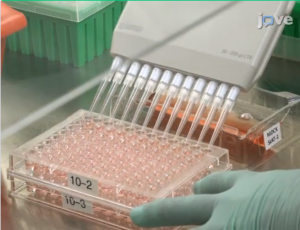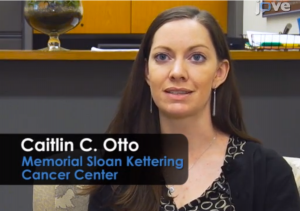We have all been there at some point or the other, rushing into our local pharmacy to get our “flu shot.” The flu shot works by enhancing our immune system to fight against the most popular Influenza virus.
There are two types of Influenza viruses: Type A and B. These viruses are routinely spread and are responsible for seasonal flu each year. It’s a highly contagious infection of the throat, nose, and lungs occurring mostly in the late fall, winter, and early spring.
If neglected, flu is a severe infection that affects between 5-20% of the US population annually. As per the National Foundation for Infectious Diseases, each year, more than 200,000 individuals are hospitalized, and 3,000-49,000 deaths occur from influenza-related complications.
Fortunately, because of the extensive research carried out by the scientific community, we can now battle this virus. New vaccines, diagnostic tools, and treatments have been emerging to circumvent this issue.
 Amongst these are our JoVE authors, who have demonstrated some of their techniques to address and meet the demands and needs of the people. Dr. Min Z. Levine and co-authors have developed a microneutralization assay using Madine Darby Canine Kidney SIAT1 cells to measure neutralizing antibody titers against A(H3N2) viruses.
Amongst these are our JoVE authors, who have demonstrated some of their techniques to address and meet the demands and needs of the people. Dr. Min Z. Levine and co-authors have developed a microneutralization assay using Madine Darby Canine Kidney SIAT1 cells to measure neutralizing antibody titers against A(H3N2) viruses.
The primary immune mechanism that correlates with protection against influenza infections is the interaction of the neutralizing antibodies against hemagglutinin of the influenza virus, which is determined by the microneutralization assay. This also happens to be the central assay to detect antibodies against the influenza infection. This JoVE Video Article shows how the microneutralization assay is sensitive and specific in detecting antibody responses using the MDCK-SIAT1 cells.
While it is calming to learn about such painstaking efforts to improve our vaccines, it’s imperative that better detection techniques be developed to help curb the effects of this virus. JoVE published a rapid, molecular-based study for detection of Influenza A and B virus.
In this recently published JoVE Video Article by the Memorial Sloan Kettering Cancer Center, Dr. Tang and his group used isothermal amplification with primers that are specific to influenza viruses and used molecular beacon probes for targeted detection. This is the first CLIA-waived molecular rapid flu test. The authors compare a respiratory panel assay to the Influenza A and B assay on frozen, archived nasopharyngeal swab specimens stored in viral transport medium.
This diagnostic system is faster than all currently available molecular assays. It is simple and avoids cumbersome use of many supplies that are needed in conventional testing. This could potentially serve as a point-of-care rapid influenza diagnostic test.
So, with research on newer vaccines that are stronger and keep up with the ever-changing fickle nature of the Influenza virus, and a promising diagnostic test, in the future, we can sneeze the virus away. Until then, don’t forget your flu shots!
If you are interested to read and watch more JoVE Video Articles in immunology, then check out this link below.




